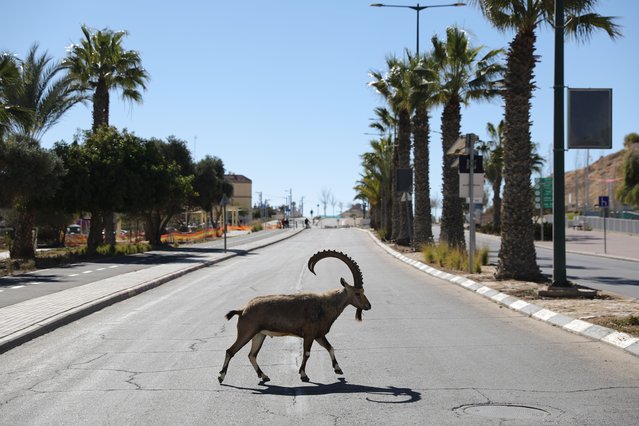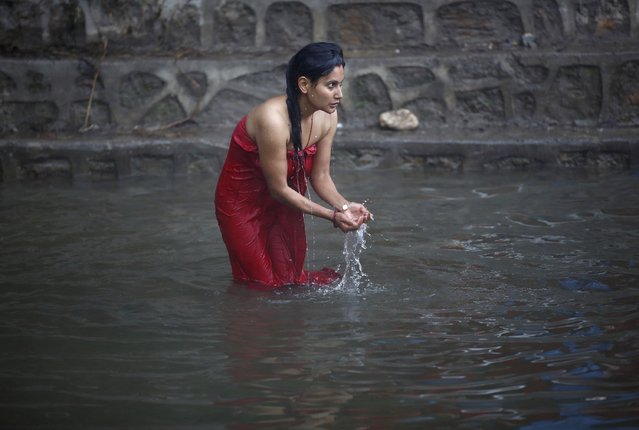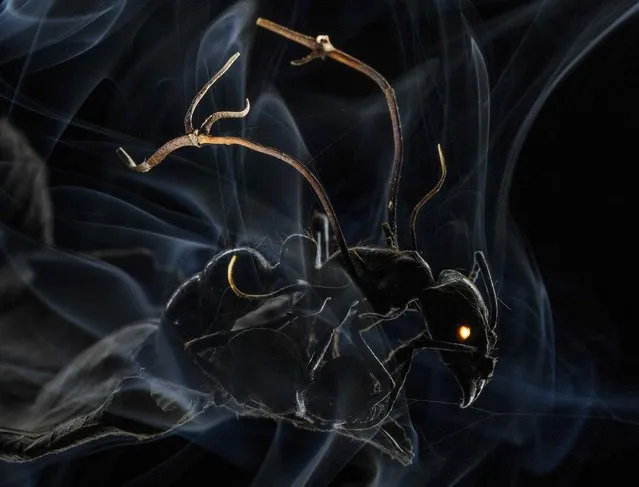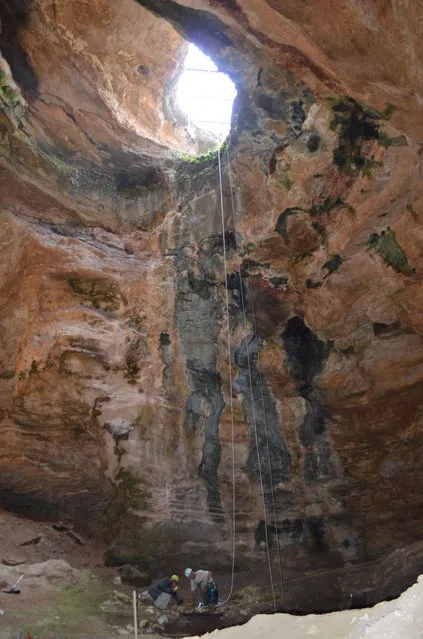
A Nubian ibex roams the streets during a national lockdown in Mitzpe Ramon, southern Israel, 22 January 2021. Although Israel is one of the first countries to have received vaccines and has so far vaccinated more then two million of its around nine million citizens, the rate of infection with the Sars-CoV-2 coronavirus, that causes the coronavirus disease (COVID-19), is rising drastically as Israel entered a full closure of two weeks. (Photo by Abir Sultan/EPA/EFE)
23 Jan 2021 09:45:00,post received
0 comments







